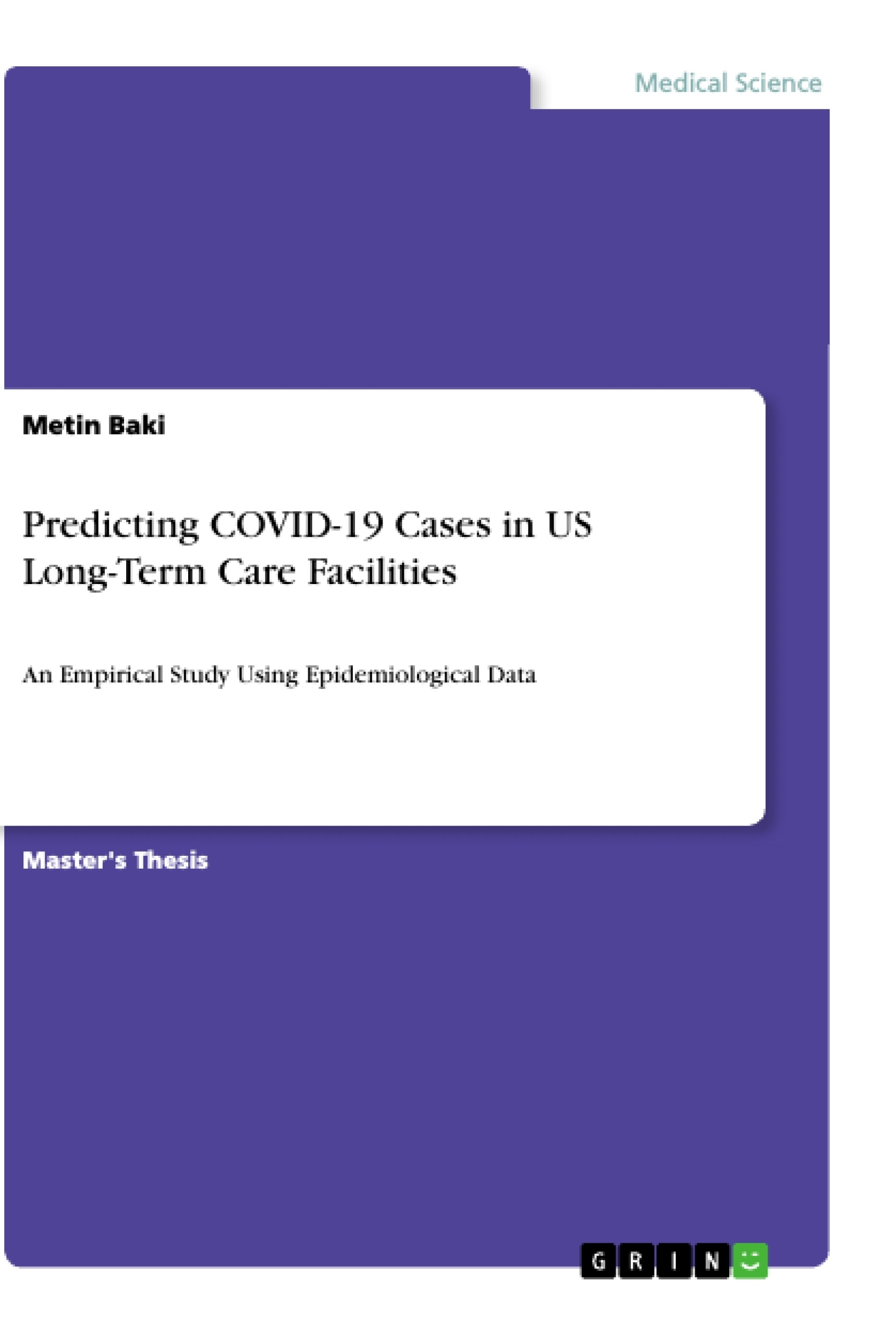The focus of this paper was to identify factors that increase the probability of COVID-19 cases in nursing homes and to provide an exemplary concept for the application of the findings using machine learning algorithms to allow future research to derive appropriate countermeasures in practice. The findings are based on 13,069 US nursing homes, and the results are mostly consistent with most recent studies around this topic.
Thus, this study provides not only additional evidence for previously studied factors based on a larger population of nursing homes with a holistic approach but also complements these with features not yet examined, such as most importantly the competitive environment of a nursing home.
The findings show evidence of a relationship between COVID-19 infections and fatalities and (1) the size of a nursing home, (2) a facility's age, (3) whether a nursing home is for-profit, (4) whether a nursing home is urban or rural, (5) the number of federal deficiencies, (6) the total amount of fines, (7) the concentration of residents with Medicaid, (8) the share of residents from a racial or ethnic minority, (9) the excess of beds in the respective county of a nursing home, (10) the number of infections per 100,000 people in a county, and (11) the number of deaths per 100,000 people in a county, (12) the occupancy rate, (13) the overall CMS facility rating, (14) the total reported RN staffing levels, (15) the total reported nurse staffing levels and (16) the Herfindahl Index.
Inhaltsverzeichnis (Table of Contents)
- Introduction
- Background
- Research Scope
- Structure of this Paper
- Literature Review
- COVID-19 and US Nursing Homes
- Factors Influencing the Number of COVID-19 Cases
- Facility Characteristics
- CMS Rating
- Deficiencies and Fines
- Nurse Staffing
- Resident Demographics
- External Factors
- Research Methodology
- Description of the Datasets
- Data Processing in Python
- Step 1: Reading the Datasets
- Step 2: Data Mapping as Preparation for the Cleaning Process
- Step 3: Data Pre-processing
- Step 4: Feature Engineering
- Step 5: Data Normalisation
- Statistical Analyses
- Univariate Analyses
- Bivariate Analyses
- Prediction of Nursing Homes with COVID-19 Cases
- Step 1: Selection of Appropriate Models
- Step 2: Feature Selection
- Step 3: Hyperparameter Tuning
- Step 4: Evaluation of Results
- Findings and Discussion
- Evaluation and Interpretation of the Developed Models
- Statistical Analyses
- Prediction of Nursing Homes with COVID-19 Cases
- Discussion of Results
- Facility Characteristics
- CMS Rating
- Deficiencies and Fines
- Nurse Staffing
- Resident Demographics
- External Factors
- Conclusion
- Summary of Key Findings
- Limitations of the Analyses
- Implications for Practice and Future Research
Zielsetzung und Themenschwerpunkte (Objectives and Key Themes)
This paper aims to identify factors that increase the probability of COVID-19 cases in nursing homes and to provide an exemplary concept for applying the findings using machine learning algorithms to allow future research to derive appropriate countermeasures for practice.
- The impact of COVID-19 on US nursing homes.
- Factors that contribute to the spread of COVID-19 in nursing homes.
- The effectiveness of machine learning models in predicting COVID-19 cases in nursing homes.
- The relationship between facility characteristics, resident demographics, and external factors and the likelihood of COVID-19 outbreaks.
- The potential implications of these findings for future research and practice.
Zusammenfassung der Kapitel (Chapter Summaries)
The paper begins with an introduction that provides context for the study and outlines the research scope and structure. Chapter 2 delves into a literature review focusing on the impact of COVID-19 on US nursing homes and identifying key variables potentially driving COVID-19 cases. The review explores various facility characteristics, ratings, deficiencies, staffing levels, resident demographics, and external factors. Chapter 3 outlines the methodology employed for data preparation and analysis. This includes a description of the nine datasets used, data processing steps in Python, and the statistical analyses conducted. Chapter 4 presents and discusses the findings from the statistical analyses and machine learning models, focusing on identifying factors related to COVID-19 cases in nursing homes. It examines the significance of individual factors like facility size, ownership type, staffing levels, and resident demographics, and discusses their implications in the context of existing research.
Schlüsselwörter (Keywords)
The main focus of the paper lies on identifying factors that increase the probability of COVID-19 cases in US long-term care facilities, using epidemiological data and machine learning models. This includes analyzing facility characteristics, quality ratings, deficiencies, nurse staffing, resident demographics, and external factors. The study uses machine learning algorithms such as logistic regression, nearest neighbours, Gaussian naïve Bayes, support vector machines, decision trees, random forests, and neural networks to predict nursing homes susceptible to COVID-19 infections.
- Quote paper
- Metin Baki (Author), 2020, Predicting COVID-19 Cases in US Long-Term Care Facilities, Munich, GRIN Verlag, https://www.grin.com/document/950064



